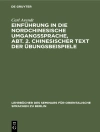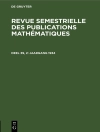What is the public sphere, how is it best described, and what role does it play in modern life? These questions have attracted considerable attention within library and information science circles over several decades, especially regarding public libraries. Circulation of Power contributes to this discussion by proposing a new research framework and new methods for analyzing public sphere communication. Using extensive data gathered from an urban public library infrastructure, this historical case study demonstrates how public sphere communication shaped the infrastructure’s development over time, producing both changes and continuities across the case’s nine periods. Two new conceptual tools—circuits and decisions cycles—form the study’s research framework, and a new explanatory theory—RLCr, or ‘Releaser, ‘ theory—accounts for why the infrastructure developed as it did. Consideration of competing theories reveals that public sphere communication remains the best explanation for infrastructural development. This book’s meticulous historical narrative of the greater Pittsburgh case, supplemented by its groundbreaking theory and innovative mixed methods design, is of interest to practitioners, academics, and general readers alike.
लेखक के बारे में
Michael M. Widdersheim, Emporia State University, USA.












